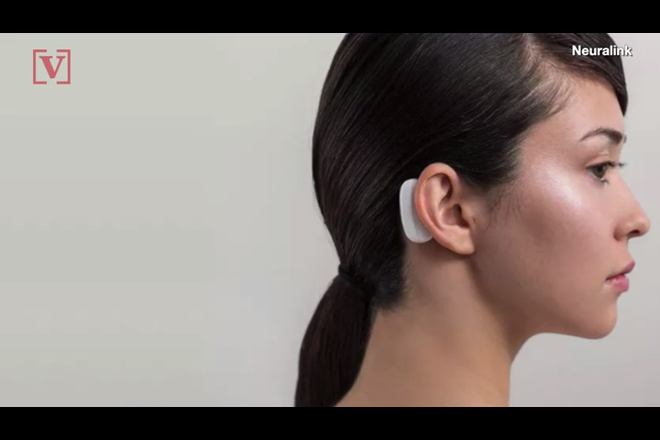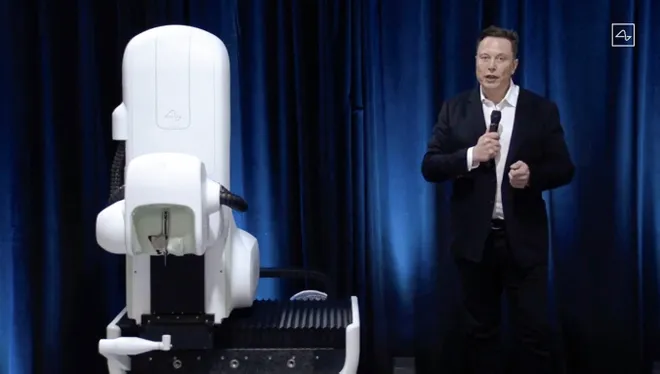Elon Musk's Neuralink chip is ready to embark on its first clinical trial. Here's how to sign up.
The search for human participants is on as Neuralink embarks on its first clinical trial, the company announced Tuesday.
Neuralink, a tech startup owned and co-founded by Elon Musk, received FDA approval in May to implant brain chips into humans.
The company has also received approval from an Institutional Review Board and has a hospital site in place to open participant recruitment, according to a blog post by Neuralink.
The goal of the BCI, or brain-computer interface, is to grant people with paralysis the ability to control a computer cursor or keyboard using their thoughts alone.
Precise Robotically Implanted Brain-Computer Interface, or PRIME, is a six-year study that aims to evaluate the safety of the implant and surgical robot in addition to the overall functionality of the brain-computer interface software.
Eligible participants will have the R1 Robot surgically place the N1 Implant into a region of the brain that controls movement intention. After the N1 Implant has been surgically placed, it's supposed to record and transmit brain signals wirelessly to an app that decodes movement intention.
“We are happy to announce that we’ve received approval from the reviewing independent institutional review board and our first hospital site to begin recruitment for our first-in-human clinical trial,” Neuralink wrote online.
Here’s what we know so far.
ICYMI:Elon Musk's Neuralink has FDA approval to put chips in humans' brains. Here's what's next.
What will Neuralink’s study entail?
Participants will be asked to use the N1 Implant and the N1 User App to control a computer and provide feedback about the system after the R1 Robot surgically places the implant, according to Neuralink.
How is the Neuralink chip inserted into the body?
Neuralink has created a surgical robot, especially designed to embed the implant and its 64 ultra-thin flexible connected threads upon which are 1,024 electrodes that record neural activity.
The robot has five built-in camera systems and uses optical coherence tomography for non-invasive imaging of brain tissue. The robot uses a needle as thin as a human hair, which inserts the "threads exactly where they need to be," Neuralink's site says.
What does the Neuralink brain chip actually do?

Neuralink's goal with its human trials is to eventually enable a person with paralysis to use a computer or phone with their brain activity alone. The Neuralink 1 implant actually includes multiple chips, a wireless battery and other electronics hermetically sealed within a device about the size of a large coin.
Several dozen ultra-thin threads protrude from the implant; those go directly into the brain. Signals from the implant are sent via Bluetooth to, and decoded by, a brain-computer interface (BCI), which would allow a person to, for instance, control an onscreen cursor or move a robotic limb.
"The first thing that we're going after is a wireless implanted chip that would enable someone who is a … tetraplegic or quadriplegic to control a computer, or mouse, or their phone, or really any device … just by thinking. This obviously would be a massive enabler, make life way easier for them. I'd say it's like a Fitbit in your skull with tiny wires that go to your brain,” Musk said in an online chat in 2021.
Beyond helping paralyzed patients regain some mobility and communicate without typing, Neuralink's longer-term goals include helping restore full mobility and sight.

What should I know if I decide to sign up for a trial?
Neuralink’s study is expected to last a period of six years, with almost two dozen follow-up visits scheduled to monitor a participant’s progress and ensure the BCI is working as intended, according to Neuralink’s online brochure.
There will be a total of nine home and in-person clinic visits that will take place over the first year and a half, which is the time frame for the primary study.
Participants will also be asked to participate in a minimum of two research sessions per week in one hour increments over the duration of the study.
The company will provide follow-up care for the next 3.5 years with a total of 20 visits scheduled for participants over that time period.
Only study-related costs, like travel expenses intended to cover transportation to and from the site, will be the only form of compensation participants receive.
How can I sign up for Neuralink’s first clinical trial?
Neuralink has a few requirements in place to determine whether you may participate in the clinical trial.
They are looking for individuals who:
- Have quadriplegia with limited function in all four limbs due to spinal cord injury or amyotrophic lateral sclerosis (ALS) and are at least 1-year post-injury without improvement
- Are at least 22 years old
- Have a consistent and reliable caregiver
Individuals who have an active implanted device like a pacemaker or deep brain stimulator (DBS), have a history of seizures, require MRIs for an ongoing medical condition, or are receiving transcranial magnetic stimulation (TMS) treatment will not be able to participate in the study. A fool-proof way to determine eligibility for current or future trials will be by filling out an application on Neuralink’s website.
More:Elon Musk's Neuralink wants people to control computers with their minds. How close are they?
Disclaimer: The copyright of this article belongs to the original author. Reposting this article is solely for the purpose of information dissemination and does not constitute any investment advice. If there is any infringement, please contact us immediately. We will make corrections or deletions as necessary. Thank you.







